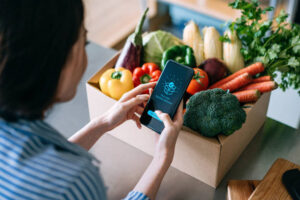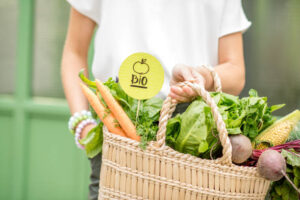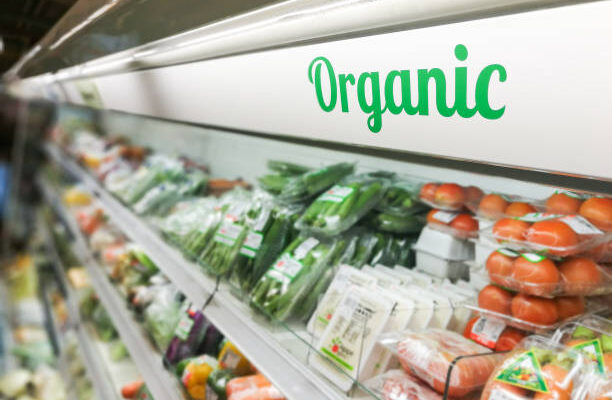In an era where health and sustainability have become paramount concerns, the demand for organic food has skyrocketed. Consumers are increasingly seeking out organic products, believing them to be healthier and more environmentally friendly than their conventional counterparts. But how can you be sure that the food you’re buying is truly organic? In this comprehensive guide, we’ll explore the various ways to determine if your food is organic and why choosing organic can be a wise and responsible choice.
 (Photo from iStock)
(Photo from iStock)
-
The Organic Revolution
The organic food movement has gained immense popularity in recent years, driven by growing concerns about the health and environmental impacts of conventional farming practices. Organic agriculture focuses on sustainability, biodiversity, and natural processes, eschewing synthetic chemicals and genetically modified organisms (GMOs). It’s a holistic approach to food production that prioritizes soil health, animal welfare, and reduced pesticide usage.
-
Look for the Organic Certification Label
 (Photo from iStock)
(Photo from iStock)
One of the most straightforward ways to identify organic food is by checking for an organic certification label. These labels, issued by authorized certifying bodies, verify that a product complies with organic farming and production standards. In the United States, the USDA Organic label is widely recognized and signifies that the product meets stringent organic requirements.
Here’s a breakdown of the USDA Organic label and what it means:
- 100% Organic: Products bearing this label are made entirely from organic ingredients. No synthetic chemicals, pesticides, or genetically modified organisms (GMOs) are allowed in these products.
- Organic: Products labelled as “Organic” must contain at least 95% organic ingredients. The remaining 5% may include non-organic ingredients that are on the USDA’s approved list.
- Made with Organic Ingredients: For products with this label, at least 70% of the ingredients are organic. The remaining 30% must meet the USDA’s criteria for non-organic ingredients.
-
Get to Know Your Farmers and Local Producers
If you’re passionate about organic food and want to ensure its authenticity, consider getting to know local farmers and producers. Farmers’ markets, community-supported agriculture (CSA) programs, and direct-to-consumer sales can be excellent sources of organic produce and products. Building a relationship with local producers allows you to ask questions about their farming practices, visit their farms, and gain a deeper understanding of their commitment to organic principles.
-
Read Product Labels and Ingredient Lists
When it comes to processed foods, reading product labels and ingredient lists can help you identify whether the food is truly organic. Organic ingredients must be clearly indicated on the ingredient list, and the product may also bear the USDA Organic label if it meets the organic standards.
-
Use Digital Resources and Apps
 (Photo from iStock)
(Photo from iStock)
In today’s digital age, there are numerous resources and apps available to help consumers determine if their food is organic. These tools can provide valuable information at your fingertips, making it easier to make informed choices while shopping. Here are some popular options:
- Organic Food Apps: Several apps, such as the “Organic Food Scanner” and “Fooducate,” allow you to scan barcodes and get detailed information about a product’s organic status. These apps can provide insights into whether a product is organic or contains any potentially harmful additives.
- Sustainable Food Guides: Websites and apps like the “Sustainable Seafood Guide” can help you make eco-conscious choices when it comes to seafood or produce.
- Certification Websites: Many certifying bodies and organizations have websites with searchable databases of certified organic products. You can use these websites to verify the organic status of specific brands or products.
-
Join the Community of Organic Enthusiasts
Engaging with the organic community can be an excellent way to stay informed about organic food options and share knowledge with like-minded individuals. Social media platforms, online forums, and local organic food associations can connect you with others who are passionate about organic living.
-
Visit Farmers’ Markets and Local Stores
Shopping at farmers’ markets and local stores can be a rewarding experience for those seeking organic food. Many small-scale farmers and artisanal producers sell their organic products directly to consumers at these venues. Here’s how to make the most of your visits:
- Ask Questions: When you visit farmers’ markets and local stores, don’t be afraid to strike up conversations with vendors. Ask them about their farming practices, whether they use pesticides, and if they have any organic certifications. Most vendors are happy to share information about their products.
- Check for Organic Signs: Look for signs or labels indicating that a product is organic. Many farmers’ markets and local stores take pride in offering organic options and will clearly label them.
- Support Local: By shopping at farmers’ markets and local stores, you not only have the opportunity to buy organic but also to support your local economy and small-scale farmers.
-
Consider the Price and Seasonality
 (Photo from iStock)
(Photo from iStock)
While this price difference can be a deterrent for some consumers, it’s essential to consider the long-term benefits of organic eating, both for your health and the environment.
Here are some tips to help you manage the cost of organic food:
- Prioritize: Focus on buying organic versions of items from the “Dirty Dozen” list mentioned earlier. These items are more likely to contain pesticide residues, so choosing organic can have a more significant impact on your health.
- Buy in Bulk: Purchasing organic items in bulk can often lead to cost savings. Look for bulk bins at your local grocery store or consider joining a food co-op where you can buy organic products in larger quantities.
- Seasonal Eating: Embrace seasonal eating by buying fruits and vegetables when they are in season. In-season produce is typically more affordable and has a lower environmental footprint since it doesn’t require long-distance transportation.
-
Stay Informed and Be a Conscious Consumer
In conclusion, knowing if your food is organic involves a combination of factors, from checking certification labels to asking questions and using digital resources. Being a conscious consumer and supporting organic agriculture is not only beneficial for your health but also contributes to a more sustainable and environmentally friendly food system.
Reference:
Healthline
Want to do a meal prep, what are you waiting, go check some amazing ideas for meal prepping, click on the link below:
How to do your meal prepping routine




